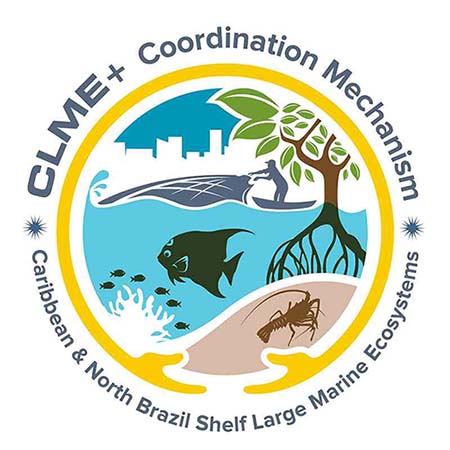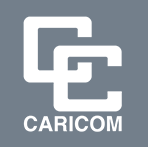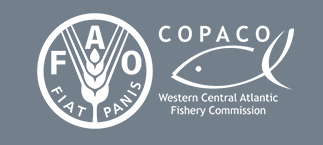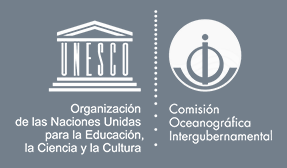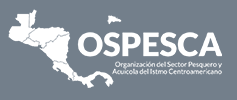Displaying 893 results.
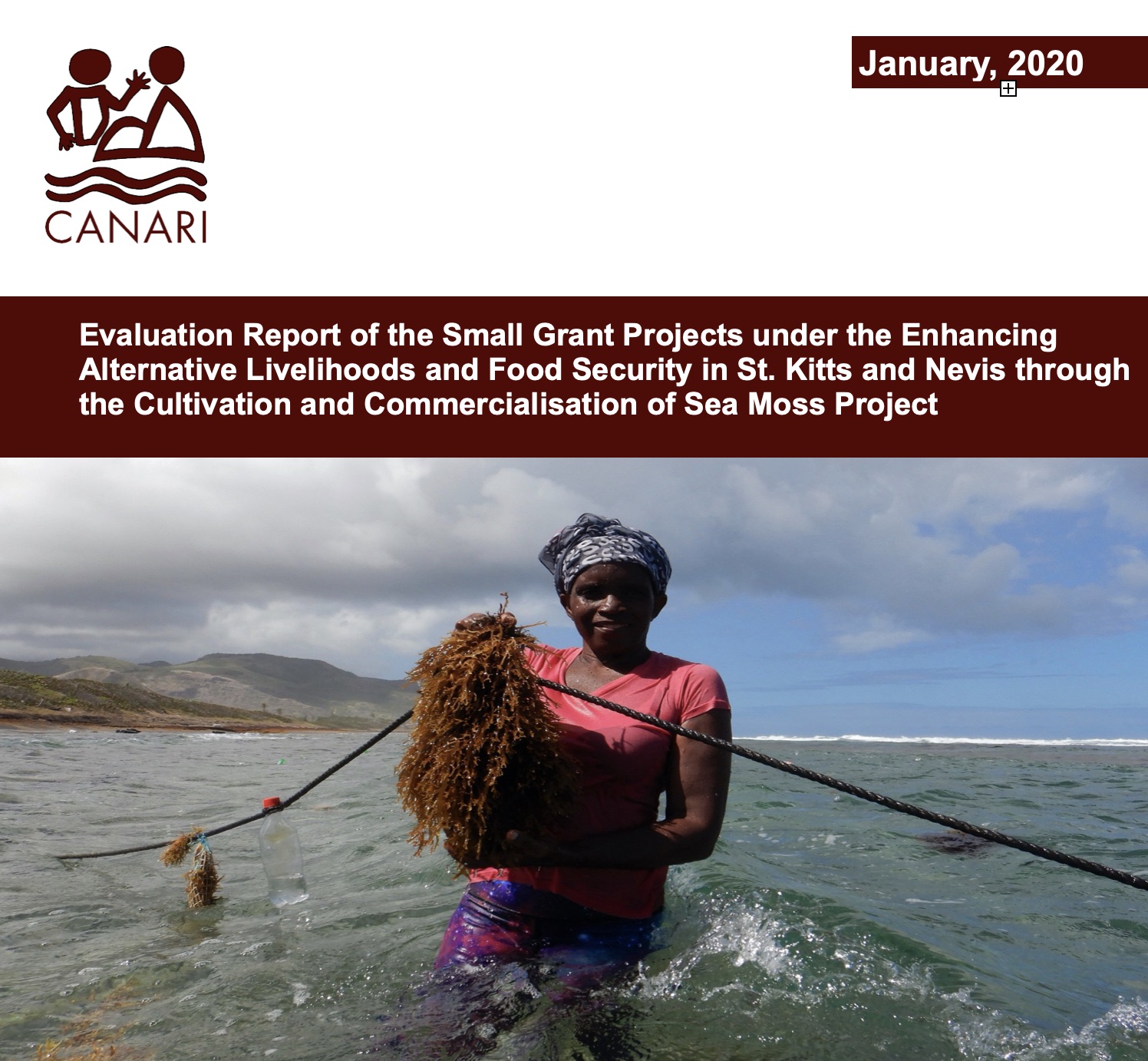
Evaluation Report of the Small Grant Projects under the Enhancing Alternative Livelihoods and Food Security in St. Kitts and Nevis through the Cultivation and Commercialisation of Sea Moss Project
Author: CANARI
Year: 2020
Keywords: Sea moss Small Grant Projects Enhancing Alternative LivelihoodsFood Security St. Kitts Nevis C-SAP, Ecosystem Based Management, Small Grants Coordination Mechanism, fisheries
 6
6


 Report issue
Report issue

Expenditure And Willingness-To-Pay Survey Of Caribbean Billfish Anglers: Summary Report
This circular summarizes the methods and results of a survey designed to estimate angler expenditures and willingness-to-pay (WTP) for billfish recreational fishing in the Caribbean. The survey conducted in 2017 found that the value of billfish recreational fishing and expenditures by recreational fishers are very high in the region. The results demonstrate that there is the potential to raise conservation funds from this resource user group. This study estimated that one more billfish caught in the Caribbean, regardless of the disposition of that catch, was worth USD 761, with USD 1 494 for an additional trophy fish caught.
Author: Genter, B., and Whitehead, John
Year: 2018
Keywords: Expenditure And Willingness-To-Pay Survey Caribbean Billfish Anglers
 4
4


 Report issue
Report issue

Experience Note – SAP Development and Endorsement Process: Caribbean Large Marine Ecosystem and Adjacent Regions
Author: GEF
Year:
Keywords:
 5
5


 Report issue
Report issue

Experiences of the Belize Spawning Aggregation Working Group. Proceedings of the Gulf and Caribbean Fisheries Institute. 59:455-462. Gibson, J., R.F. Pott, G. Paz, I. Majil and N. Requena. 2007.
This paper chronicles the history of the Belize Spawning Aggregation Working Group from its inception following a national
survey of many of Belize’s Nassau grouper spawning sites conducted during the 2000 – 2001 aggregation period. It
documents how the Group evolved and developed its objectives, and highlights its main achievements, one of which was the
passage of legislation that provided full protection to 11 spawning sites and introduced a closed season for the Nassau
grouper. The Group was formed in response to the drastic decline in numbers of spawning Nassau groupers, which was
dramatically brought to the attention of many concerned organizations at a historic workshop held in July 2001 in Belize
City. The Group assumed the responsibility of taking action to stem the decline. Its success has depended to a large extent
on its diverse membership, which is drawn from government agencies, NGOs and the private sector. The invaluable
contribution made by many fishers, who unselfishly shared their traditional knowledge of spawning banks with researchers
and managers, was also a major factor in the Group’s success and the protection of many spawning sites. Members are
interested in sharing their experience with other similar groups that are being developed within the Mesoamerican reef
region.
Author: GIBSON, J. et al
Year: 2007
Keywords: Spawning Aggregation Working Group Spawning aggregation
 6
6


 Report issue
Report issue
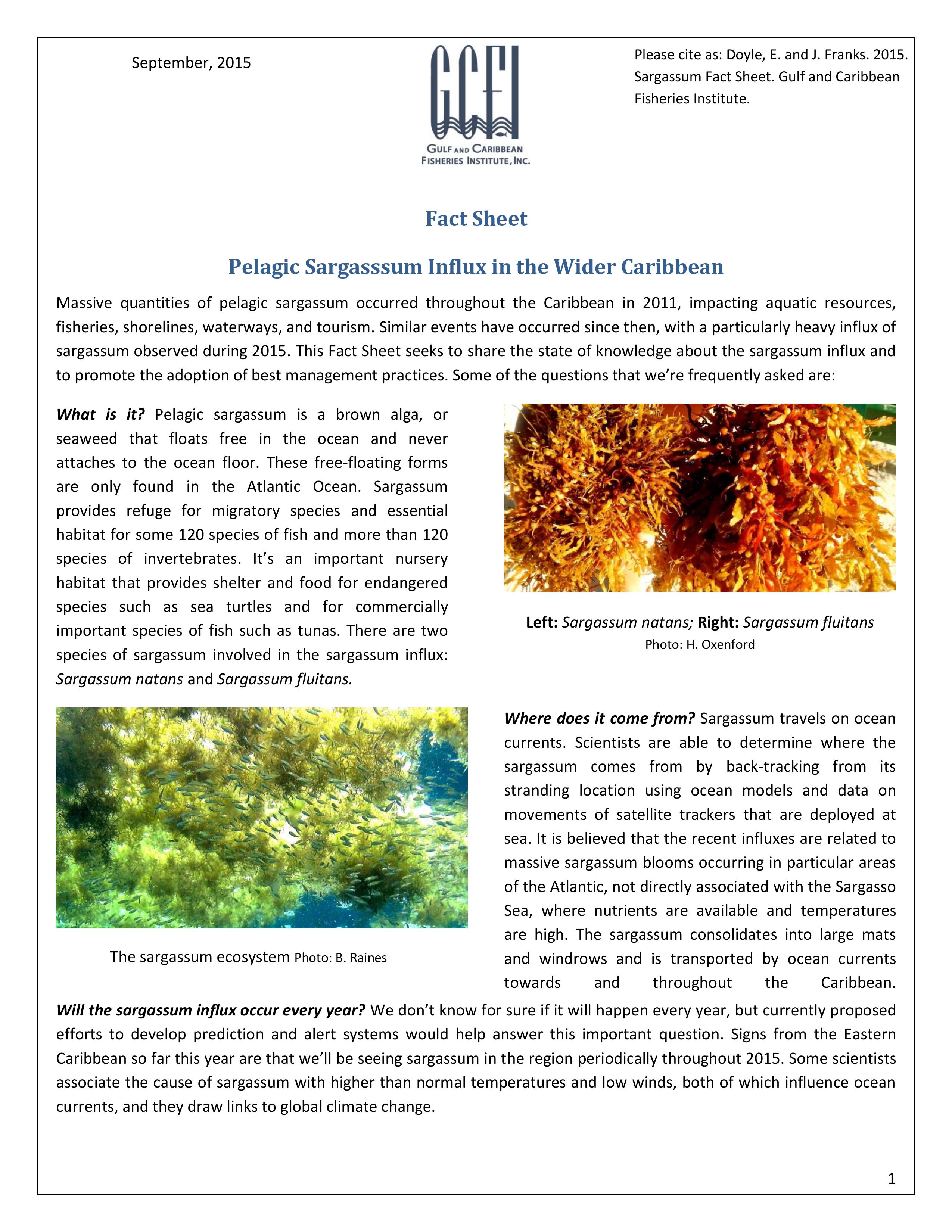
Fact Sheet – Pelagic Sargasssum Influx in the Wider Caribbean
Massive quantities of pelagic sargassum occurred throughout the Caribbean in 2011, impacting aquatic resources, fisheries, shorelines, waterways, and tourism. Similar events have occurred since then, with a particularly heavy influx of sargassum observed during 2015. This Fact Sheet seeks to share the state of knowledge about the sargassum influx and to promote the adoption of best management practices.
Author: Doyle, E. and J. Franks.
Year: 2015
Keywords:
 8
8


 Report issue
Report issue
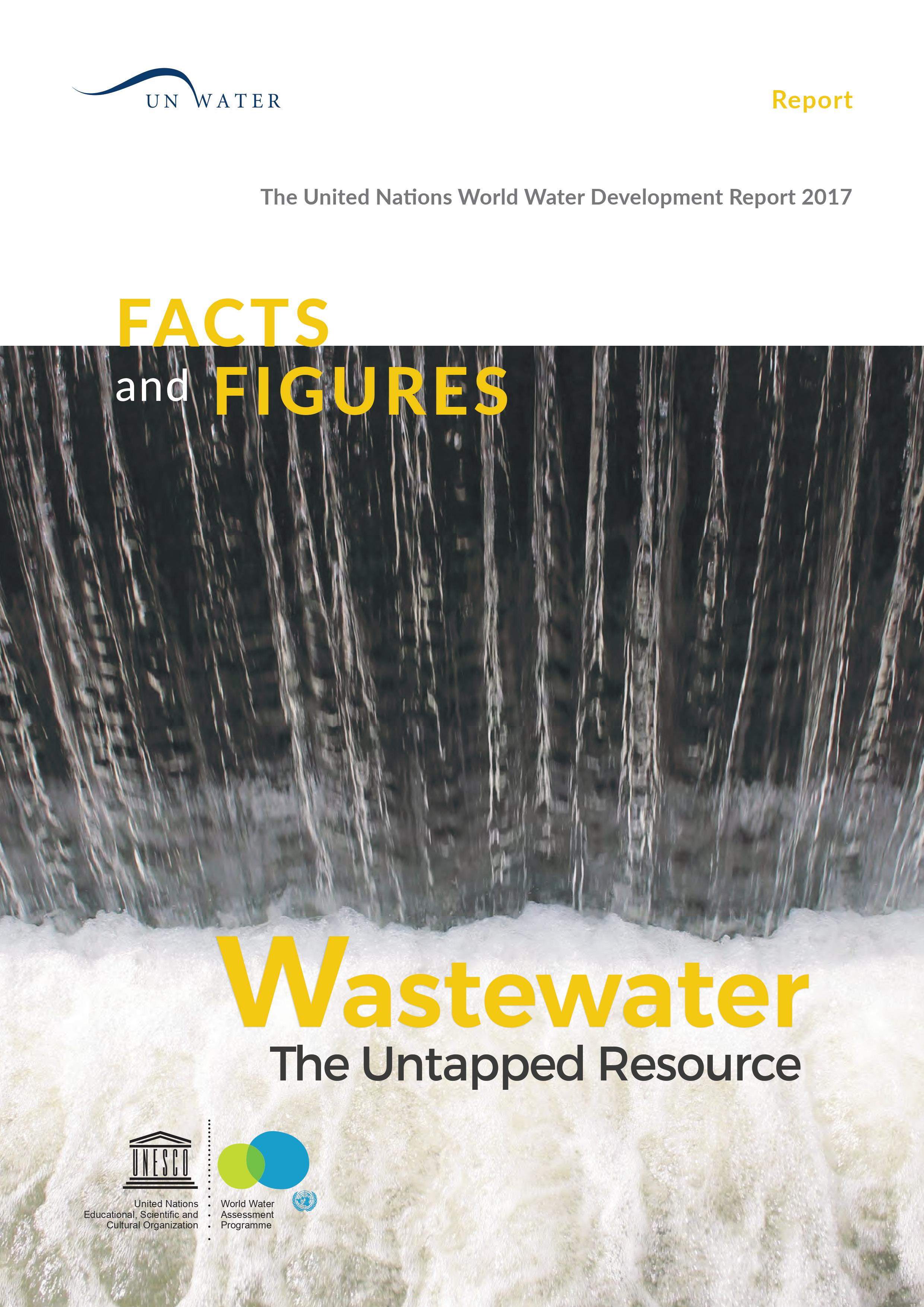
Facts and Figures, Wastewater The Untapped Resource – The United Nations World Water Development Report 2017
This document shows figures and data in the form of graphs, in order to show the importance of waste water in the economy of the regions and how it is used as an instrument of economic exploitation, also highlights how they affect the environment and health for the general population.
Author: UNESCO
Year: 2017
Keywords:
 5
5


 Report issue
Report issue
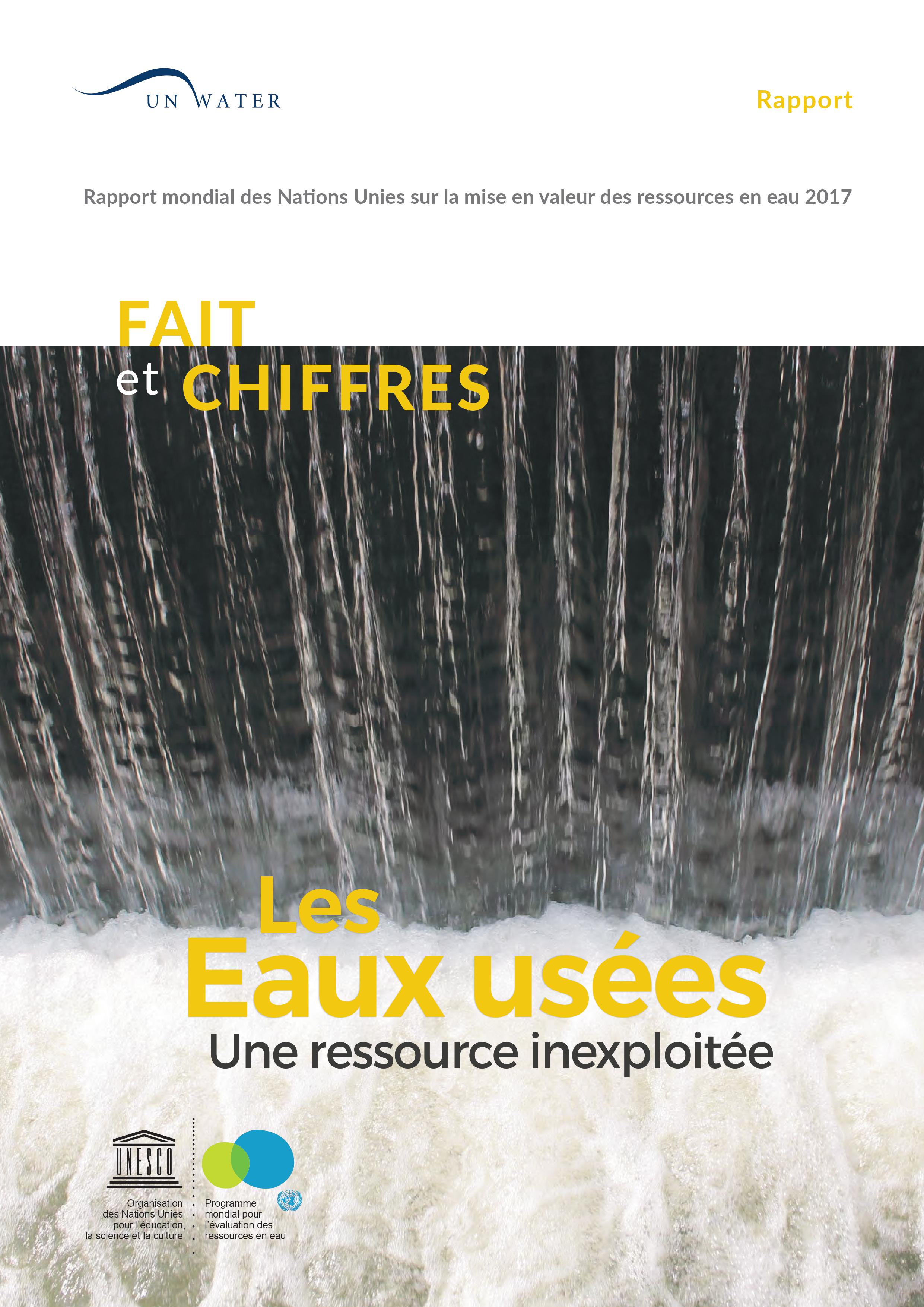
Fait et Chiffres, Les Eaux uséss – Une ressource inexploitée
Ce document présente des chiffres et des données sous forme de graphiques, afin d’exposer l’importance des eaux usées pour l’économie des régions et la manière dont elles sont utilisées en tant qu’outils de mise en valeur économique, il souligne également la façon dont ces dernières influencent l’environnement et la santé de la population en général.
Author: UNESCO
Year: 2017
Keywords:
 4
4


 Report issue
Report issue

Fiche technique de la gouvernance des océans CLME+: Décision clé sur la gouvernance des océans dans la Grande Caraïbe
Les “Fiches techniques de la gouvernance des océans CLME+” documentent les progrès réalisés vers une gouvernance interactive des océans dans la region CLME+. Cette fiche particulier couvre la décision prise lors de la réunion intersessions du Comité directeur du projet PNUD/FEM “CLME+” du 16 au 18 juin 2020, où plus de 20 pays et 14 organisations ont jeté les bases d’un mécanisme régional de coordination de la “gouvernance des océans”.
Author: CLME+ Project
Year: 2020
Keywords: governance, ocean governance
 6
6


 Report issue
Report issue

Fifteenth Session Of The IOC Sub-Commission For The Caribbean And Adjacent Regions (IOCARIBE-XV)
The Fifteenth session of the IOC Sub-Commission for the Caribbean and Adjacent Regions (SC-IOCARIBE-XV) was held in Oranjestad, Aruba,from 6 to 10 May 2019. The session was attended by 45 participants from 13 countries of the Caribbean Region, 2 countries from outside the region (Argentina and the Republic of Korea) and 8 UN, International and regional organizations. At this session, IOCARIBE reviewed progress made during the Intersessional period 2017–2019 and adopted twelve recommendations.
Author: IOCARIBE-IOC
Year: 2019
Keywords:
 2
2


 Report issue
Report issue

Final Report of Regional Workshop on Coastal and Marine Water Quality Indicators and Methodologies to Determine Pollutant Loads in the Wider Caribbean
The Workshop “Coastal and Marine Water Quality Indicators and Methodologies to Determine Pollutant Loads in the Wider Caribbean” took place in Havana, Cuba, with the following objectives:
Analyse methodologies used to determine pollutant loads in the marine environment from pointand non-point sources and the main coastal and marine water quality indicators.
Discuss methodologies used for the characterization and quantification of municipal andindustrial solid wastes.
Present preliminary results for the update of the CEP Technical Report No.33.
Author: UNEP CEP
Year: 2006
Keywords: LBS SOCAR Working Group pollution
 8
8


 Report issue
Report issue
